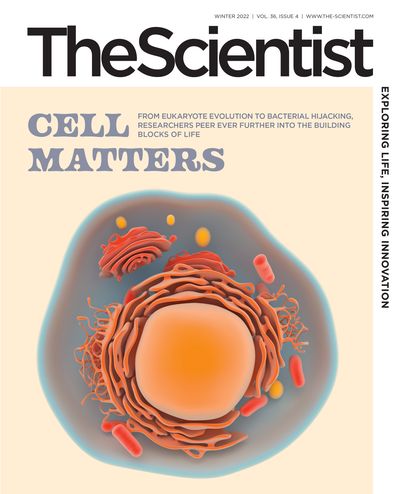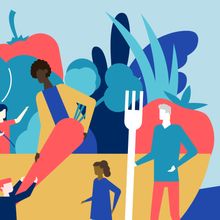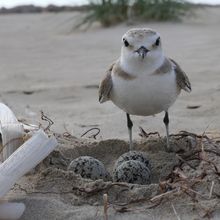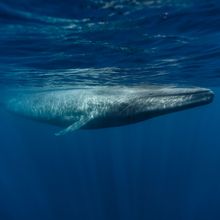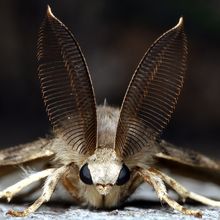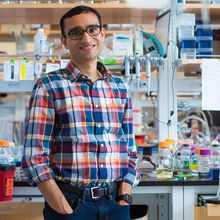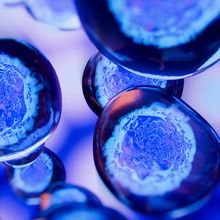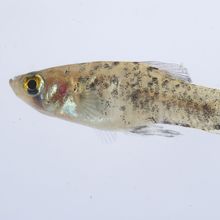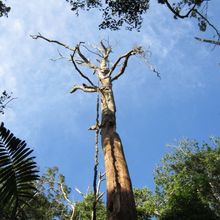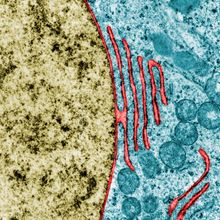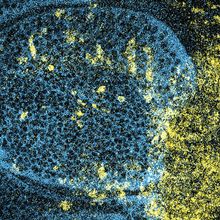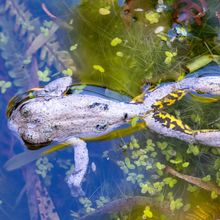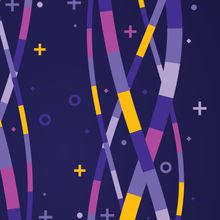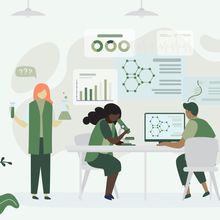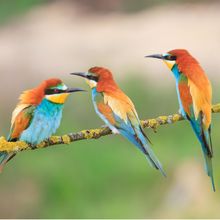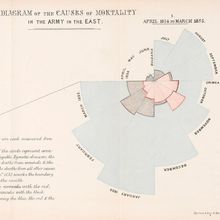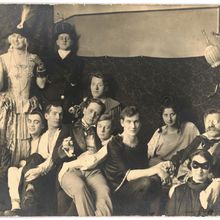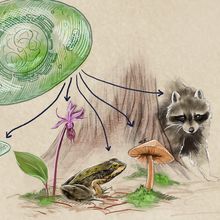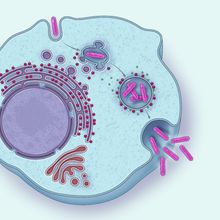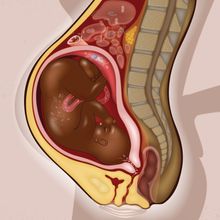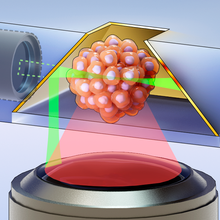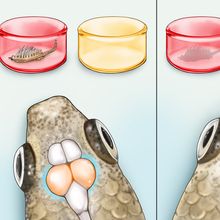Login
SubscribeFeatures
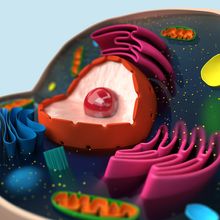
The Long and Winding Road to Eukaryotic Cells
Amanda Heidt | Oct 17, 2022 | 10+ min read
Despite recent advances in the study of eukaryogenesis, much remains unresolved about the origin and evolution of the most complex domain of life.
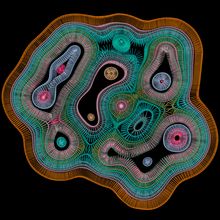
How Intracellular Bacteria Hijack Your Cells
Catherine Offord | Dec 1, 2022 | 10+ min read
Scientists studying pathogens such as Chlamydia, Legionella, and Listeria get a master class in how to control the internal workings of mammalian cells.
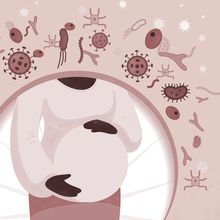
Modulating Immunity to Improve Pregnancy Outcomes
Tobias R. Kollmann, Arnaud Marchant, and Sing Sing Way | Nov 14, 2022 | 10+ min read
Aberrant immune activation, the main cause of prematurity and stillbirths, could be preventable through interventions such as maternal vaccination.
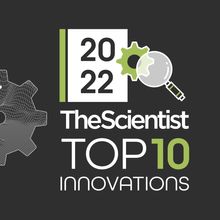
2022 Top 10 Innovations
The Scientist Staff | Dec 12, 2022 | 10+ min read
This year’s crop of winning products features many with a clinical focus and others that represent significant advances in sequencing, single-cell analysis, and more.
Editorial
Insights Abound Even at Journey’s End
Insights Abound Even at Journey’s End
Although my time at The Scientist has drawn to a close, I am consistently surprised by science.
Speaking of Science
Notable Science Quotes
Notable Science Quotes
Leaving Twitter, improving science communication, understanding the dangers of avian flu, and more
Critic at Large
Opinion: Eating Right to Avoid Catastrophe
Opinion: Eating Right to Avoid Catastrophe
The key to averting cataclysmic events, such as pandemics, climate change, and mass extinction of species, lies partly in what’s on our plates.
Opinion: The Problem with Researchers Hoarding Resources
Opinion: The Problem with Researchers Hoarding Resources
For too long, some scientists have acted like Gollums of the ivory tower, guarding precious study sites, model organisms, and even entire fields of inquiry.
Notebook
Avian Deception More Widespread Than Previously Thought
Avian Deception More Widespread Than Previously Thought
The broken-wing display, in which birds fake being wounded to protect their nests from predators, is found across the avian phylogenetic tree, a study finds.
The Evolutionary Shaping of Modern Whales
The Evolutionary Shaping of Modern Whales
A survey of more than 200 whale skulls has unveiled bursts of evolution over the past 50 million years.
Many Moths Speak Up to Ward Off Bats
Many Moths Speak Up to Ward Off Bats
A decade-long, multicontinent study suggests that acoustic defense strategies are more common among moths than previously imagined.
Inside the Project Trying to Save Datasets from Extinction
Inside the Project Trying to Save Datasets from Extinction
Researchers race to find ecological data kept on outdated media or in dusty backroom boxes—before they’re lost forever.
Scientist to Watch
Ankur Jain Explores RNA Aggregations in Neurodegenerative Disease
Ankur Jain Explores RNA Aggregations in Neurodegenerative Disease
The MIT biologist studies how RNA molecules self-assemble and the role these accumulations may play in diseases such as ALS and Huntington’s.
Chantell Evans Tracks Mitochondrial Cleanup in Neurons
Chantell Evans Tracks Mitochondrial Cleanup in Neurons
The Duke University cell biologist uses live-cell microscopy to reveal how brain cells rid themselves of damaged mitochondria and what goes wrong in neurodegenerative disease.
Modus Operandi
Expert JeWell-ry Designers
Expert JeWell-ry Designers
Analyzing organoids has proven slow and cumbersome for scientists. But a new technique may speed things up, producing 3D images of hundreds of organoids per hour.
The Literature
Fish Brain Region Size Correlates with Cognitive Flexibility
Fish Brain Region Size Correlates with Cognitive Flexibility
The relative sizes of specific parts of the guppy brain may explain why some fish are better at learning certain tasks than others.
Certain Tree Species Are More Susceptible to Death by Lightning
Certain Tree Species Are More Susceptible to Death by Lightning
Expected increases in lightning strikes due to climate change could alter the botanical composition of tropical forests.
New Gene Mutants Identified in Rare Motor Neuron Diseases
New Gene Mutants Identified in Rare Motor Neuron Diseases
The discovery of gene variants in cases of hereditary spastic dysplasia could provide a diagnosis to affected families where no genetic cause could be found before.
Sweet Taste Receptors Regulate Proteins in Developing Fruit Flies
Sweet Taste Receptors Regulate Proteins in Developing Fruit Flies
An unexpected find shows that sweet-sensing receptors also help epithelial cells in Drosophila larvae stay alive amid proteotoxic stress.
Chytrid Fungus Deploys Varying Strategies to Infect Amphibians
Chytrid Fungus Deploys Varying Strategies to Infect Amphibians
The ability to activate different sets of genes has likely helped the chytrid fungus Batrachochytrium dendrobatidis spread widely in amphibians, resulting in global population declines.
Bio Business
Can “Gene Writing” Deliver What Gene Editing Can’t?
Can “Gene Writing” Deliver What Gene Editing Can’t?
A biotech startup called Tessera Therapeutics has made a splash with its claims about the trademarked technology. Is the excitement justified?
Careers
Green Lab Initiatives Take Root Around the World
Green Lab Initiatives Take Root Around the World
Scientists, students, and administrative staff are working to bring about a cultural shift to mitigate the impact of research on the environment.
Reading Frames
Opinion: Biodiversity Loss Worsened by Extinguishing Animal Innovators
Opinion: Biodiversity Loss Worsened by Extinguishing Animal Innovators
When species disappear, more than their genomes are lost. The potential for their creative innovation to benefit ecosystems vanishes as well.
Opinion: Are Cats Friends or Fiends?
Opinion: Are Cats Friends or Fiends?
In Pests: How Humans Create Animal Villains, I explore what it is that makes an animal a pest—and it has nothing to do with their behavior, but rather our own desires and beliefs about the natural world.
Foundations
Diagrammatic War, 1858
Diagrammatic War, 1858
Pioneering nurse Florence Nightingale had an eye for creating memorable graphics that helped convince the general population that including sanitation reforms as part of public health policy would save British soldiers’ lives.
Trans Medicine, 1919
Trans Medicine, 1919
German physician and sexologist Magnus Hirschfeld founded a revolutionary clinic where transgender people could receive gender-affirming care, but he left behind a complicated medical and scientific legacy.
Infographics
Infographic: Evolutionary Leaps Leading to Modern Eukaryotes
Infographic: Evolutionary Leaps Leading to Modern Eukaryotes
A lot happened in the hundreds of millions years separating the first and last eukaryotic common ancestors, but when and how most features arose remains a mystery.
Infographic: Intracellular Bacteria’s Tricks for Host Manipulation
Infographic: Intracellular Bacteria’s Tricks for Host Manipulation
Various microbes, including several human pathogens, hijack the cell’s skeleton, membranes, and protein-making machinery to make themselves at home.
Infographic: How Immunology Can Influence Pregnancy Outcomes
Infographic: How Immunology Can Influence Pregnancy Outcomes
Pregnancy-induced changes in the immune system are key to a successful birth. Understanding those changes could allow researchers to protect both mother and child.
Infographic: Generating Hundreds of 3D Organoid Images per Hour
Infographic: Generating Hundreds of 3D Organoid Images per Hour
By modifying a technique used to image single cells, researchers have managed to generate a super-resolution 3D image of a complete organoid in just seven seconds.
Infographic: Two Guppy Brain Regions May Help Them Learn Tasks
Infographic: Two Guppy Brain Regions May Help Them Learn Tasks
While guppies with larger optic lobes were champions at learning visual discrimination tasks, guppies with larger telencephalons fared better when researchers switched things up.
